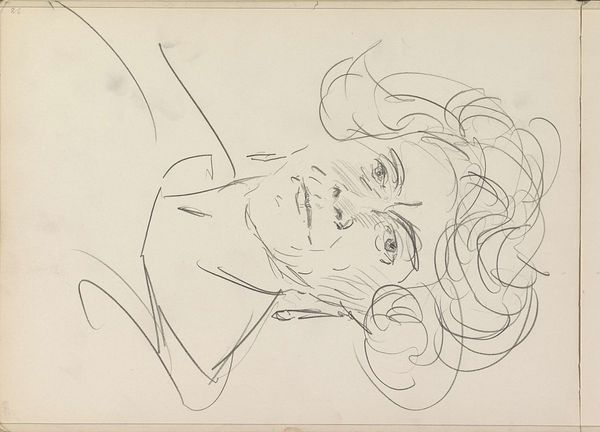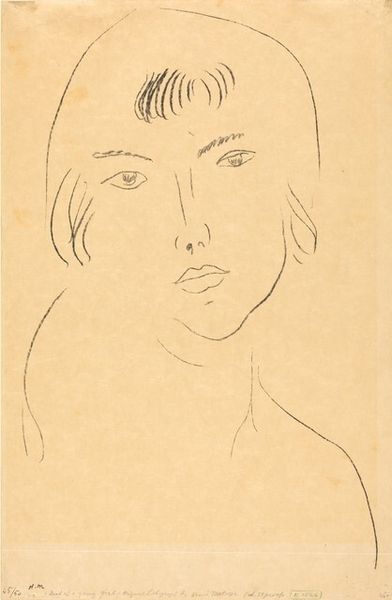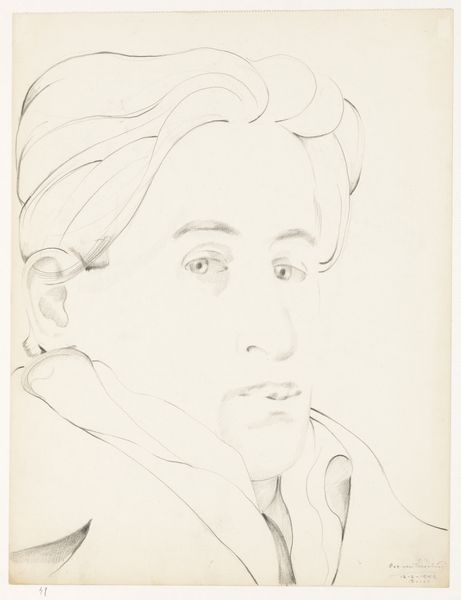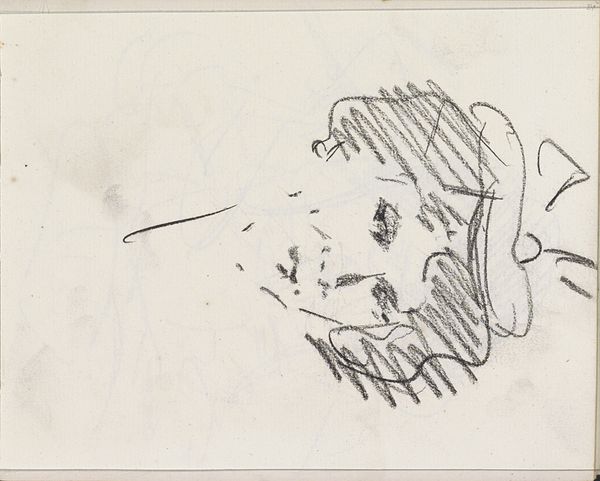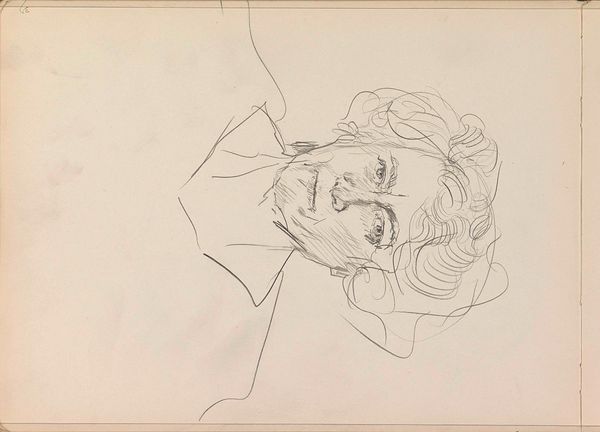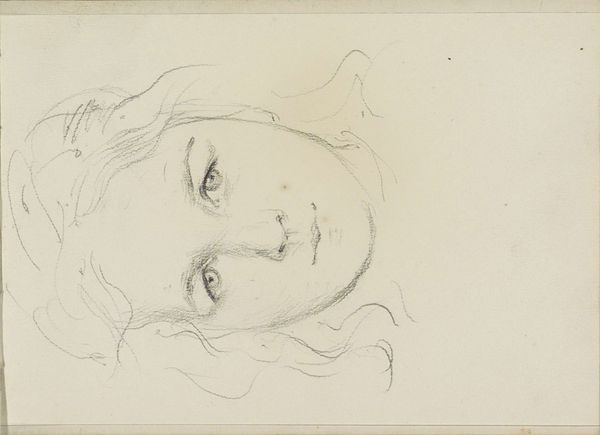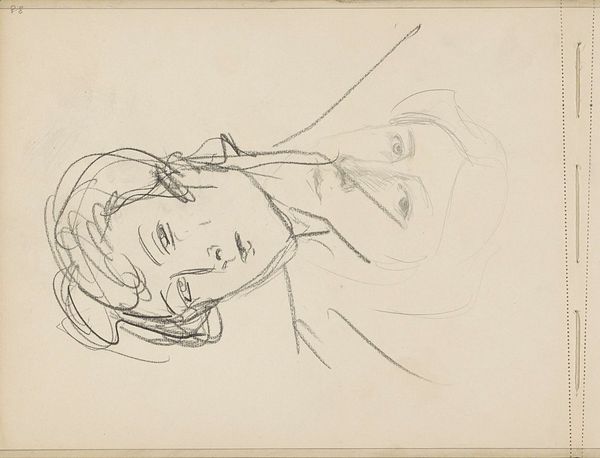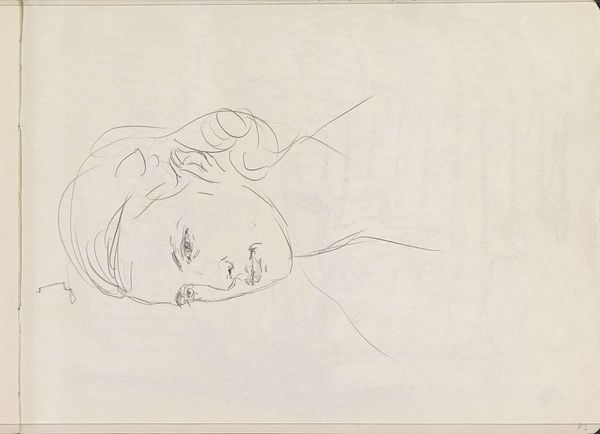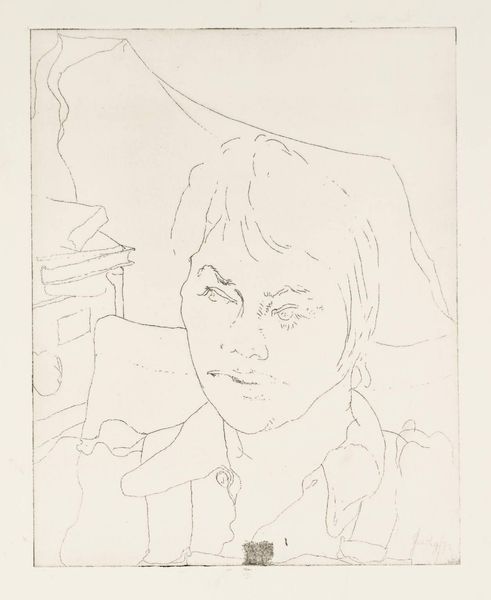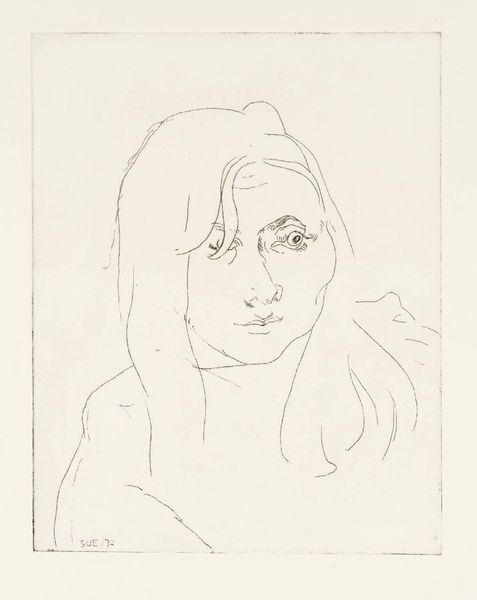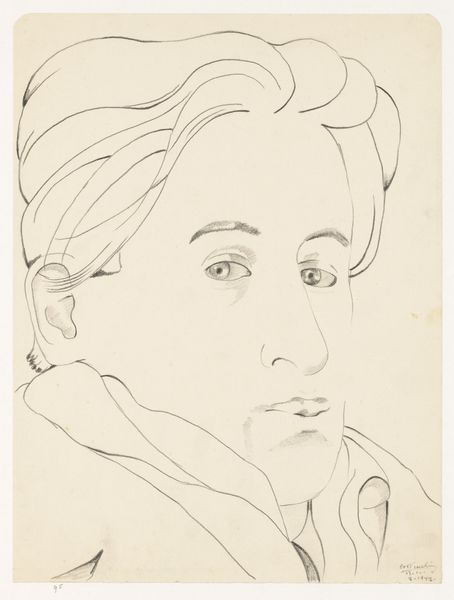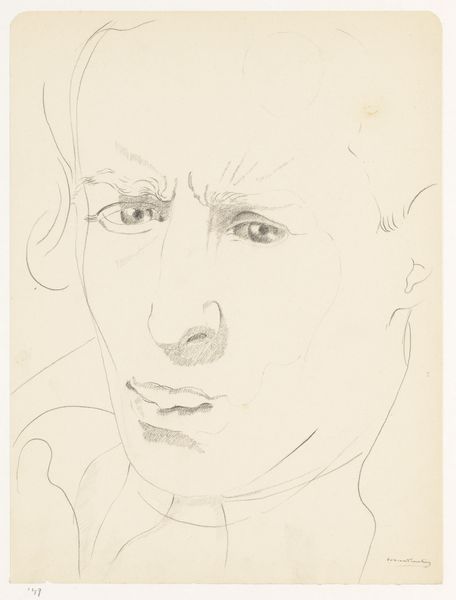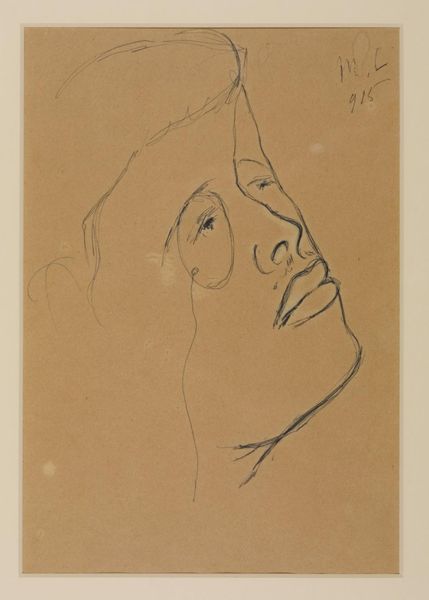
drawing, print, etching, paper, engraving
#
portrait
#
drawing
#
art-nouveau
# print
#
etching
#
pencil sketch
#
caricature
#
paper
#
line
#
symbolism
#
portrait drawing
#
engraving
Copyright: National Gallery of Art: CC0 1.0
Editor: So, here we have "Outamaro (Portrait of Margot Matisse?)," an etching done by Henri Matisse around 1914. It's such a minimalist portrait, almost like a quick sketch. I'm struck by the simple, flowing lines he uses. What do you see in this piece, beyond the surface? Curator: The apparent simplicity is deceiving. The continuous line, a defining feature, becomes a symbolic representation of connection. It echoes a thread of artistic influence drawn from Japanese art, where single, unbroken lines held spiritual significance, suggesting not just form but also the flow of energy or 'ki'. It creates the image, but it also suggests something about continuity and, perhaps, even the sitter's inner life. What feelings does the 'unbroken' quality of the lines give *you*? Editor: I guess it gives me a sense of… reassurance? That even with just a few strokes, a complete person emerges, uninterrupted, if that makes sense? Are there other symbols I should look for? Curator: Consider the gaze, for example. Even in its sketched form, there's a directness that is compelling. In many cultures, the eyes are considered windows to the soul. How does that simple direct gaze play against the Western portrait tradition, which, at that time, often depicted women as passive objects of the male gaze? Editor: Interesting. So the symbol of the unbroken line, combined with her strong gaze, projects a sense of inner resilience. I'd never thought of this amount of meaning being conveyed with such few lines! Curator: Precisely! Matisse brilliantly uses minimal symbolism to evoke complex layers of meaning. Editor: It’s fascinating how deeply we can read into what appears to be so simple at first glance. Curator: Indeed, this teaches us how much symbolism can be loaded into what we think is mere "decoration," and reminds us of the enduring presence of cultural memory in visual art.
Comments
No comments
Be the first to comment and join the conversation on the ultimate creative platform.
